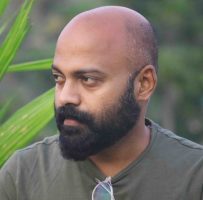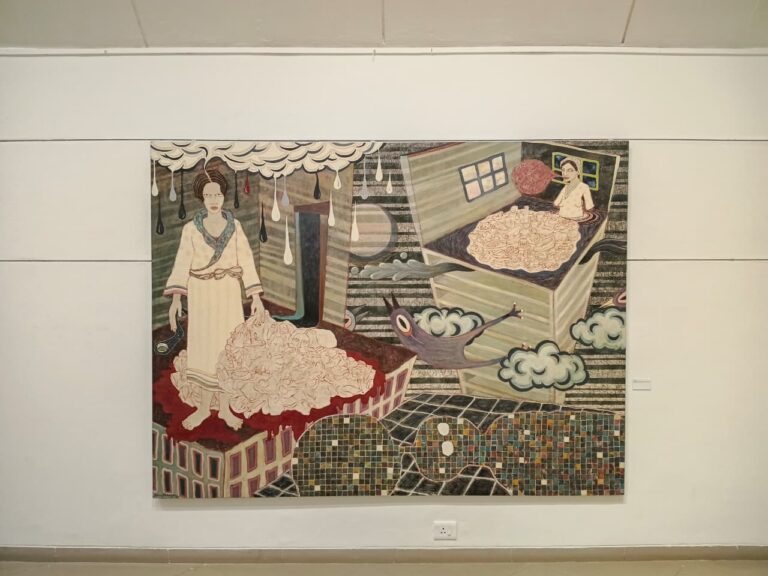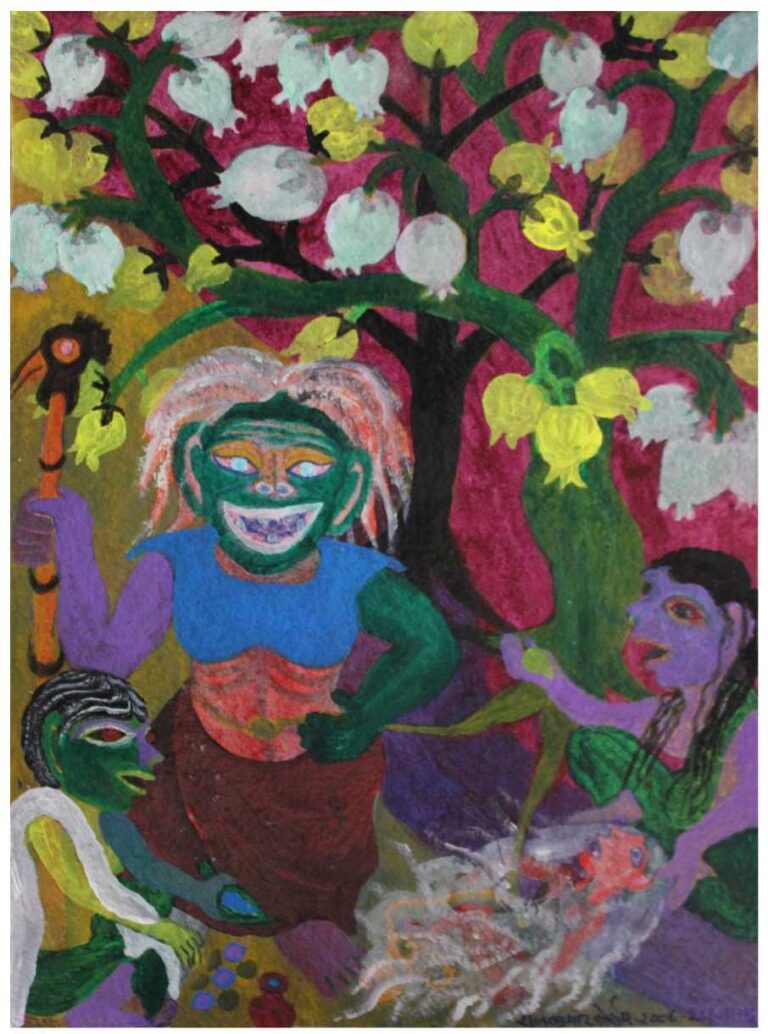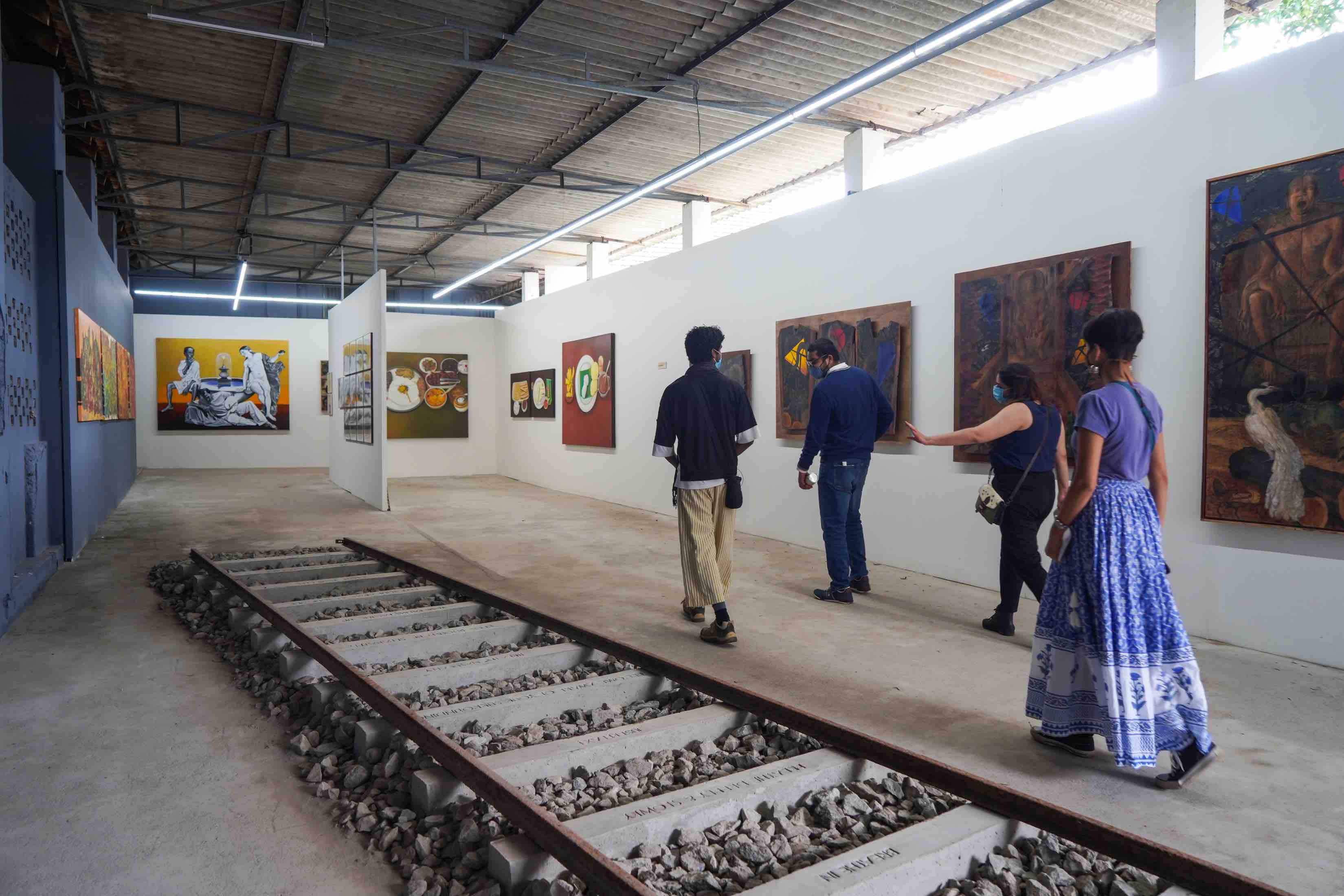
‘The universe is home; my kin embrace grasses and insects to boot.’
—Vallathol Narayana Menon
The title of the exhibition, ‘Lokame Tharavadu’ takes us immediately to the poem ‘Ente Gurunathan’ by Vallathol, undoubtedly from where the title had arisen. Is there a better title for an exhibition that brings together numerous artists of a region under an umbrella? Just like the core of the poem which declares that my home encompasses a vast biological world, full of grass and worms? The show was curated by Bose Krishnamachari under the Kochi Biennale Foundation framework and was held in Alappuzha from 18 April to 31 December 2021. Does the region-specificity raise any radical question in the premises of contemporary art? Does this exhibition reconfigure the idea of belongingness and reassert the ‘regional’ in the national art scene?
As David Laitin states in his essay ‘What Is a Language Community?’, although a society may be considered a distinctive group as an ethnic group, there is still conflict over the extent to which ethnicity is determined. Since communities in contact shape language, it can be assumed that such cultural determination is possible only through markings as a linguistic community. David Laitin’s quest to study the language community in conjunction with any field of study leads to a linguistically underscored understanding of political science and anthropology, and so on. In what follows, I engage with linguistic habitation and the concept of regional identity for an aesthetic purpose.
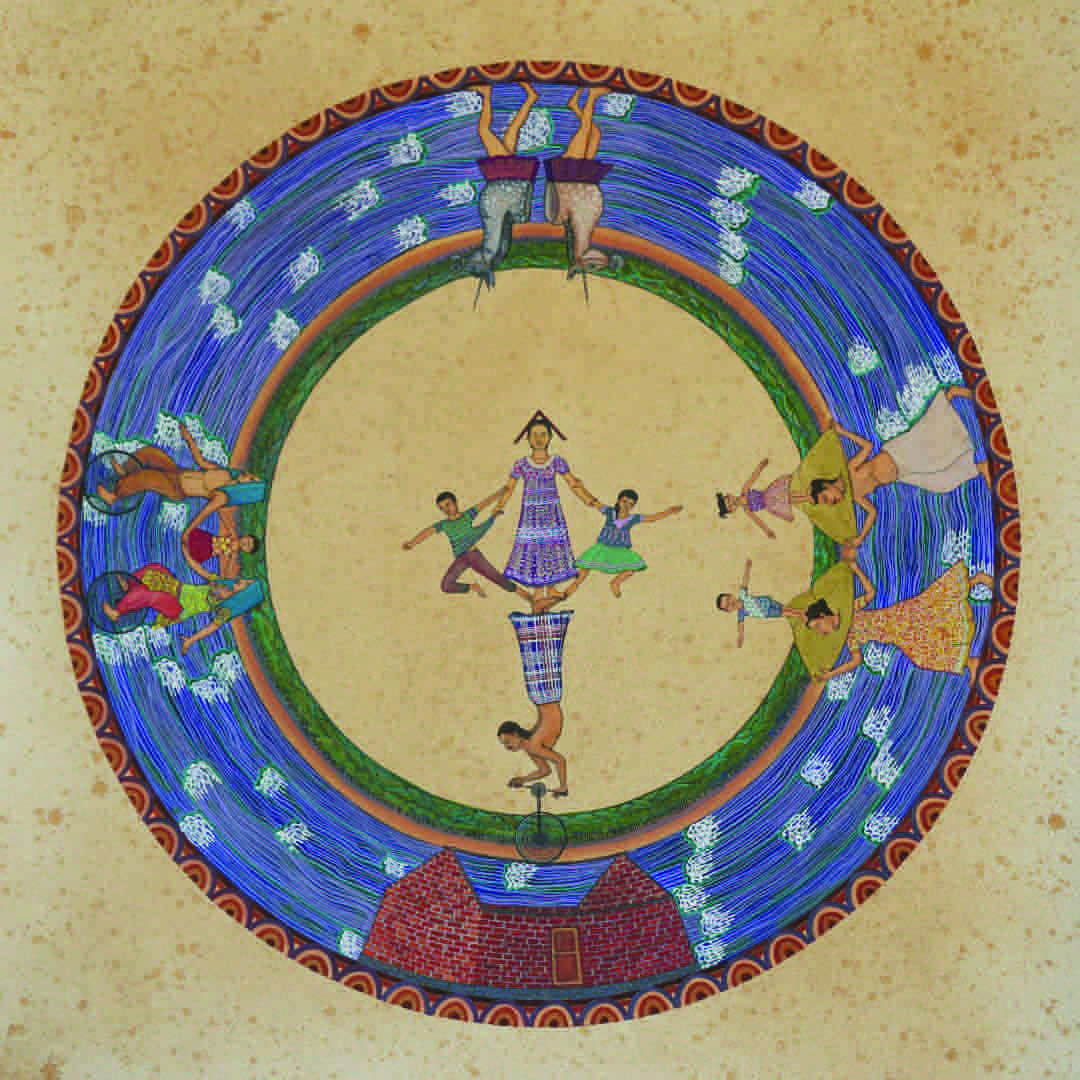
Despite some exceptions, the show has appeared as the inner urge of a community to be close to the people next door. Subsequently, this perspective of the post-covid art world becomes a hallmark by looking at their foundation and soil. The concept of home itself can be seen as an essential visual metaphor of many works presented in different dimensions among the 2,500 works by around 267 artists who belong to Kerala by birth or through linguistic identity. If we consider home as a tangible and everyday space, it is an intimate spatial reference in many works. Dibin Thilakan, in his work, Ode to Home, reconfigures the dimensions of the living space both literally and metaphorically. Here, the home is constructed upon the characters who played many roles. His works portray houses built outside the familiar circle of gendered and traditional concepts of home. Here the foundation stone of the house of authority is torn down. Instead, life is expressed as an everyday dance. While Thilakan places home as a performative gesture in painting, K. R. Sunil manifests a lost home due to environmental disaster through photographs. It can be identified that these two ends, such as mythical to documental representations, are widely evident in the show. In a similar vein of thought, Gigi Scaria visualizes the idea of home in an iconographic mode. Environment and home elements come together, and sensing it as a moving object in his installation. This work is again articulating the idea of home in the cosmopolitan. Another artist, Unnikrishnan C., carries the painted door panels into the exhibition as his works are amazingly merged with content and form. One of the doors seen here is from his homeland, Nenmara, and the other is from Baroda, during his graduation. Unnikrishnan showcases narratives of the village with its vernacular cultural idioms. The distance between mundane livelihood and art is blurred in these paintings.
Apart from the idea of home, there is a strong presence of everyday-life narratives in many works. For instance, Sreeja Pallam depicts the women workers of different streams, archives labour as a core theme in her painting. Interestingly, you might come across the workers who are engaged in tying topes and making rope barriers transformed into canvases while walking through the venues. The participation of female artists in this exhibition underscores that the concept of the female workforce is not merely the theme within the works and further actualises this for viewers. Shanti E. N., for instance, has been practising handicrafts, such as making rural landscapes for the local craft industry. She finds a way from the same rural landscapes to the realm of her art projects themselves. This transformation, in essence, expresses the interdisciplinary relationship between art, craft, and womanhood in a range of different approaches.
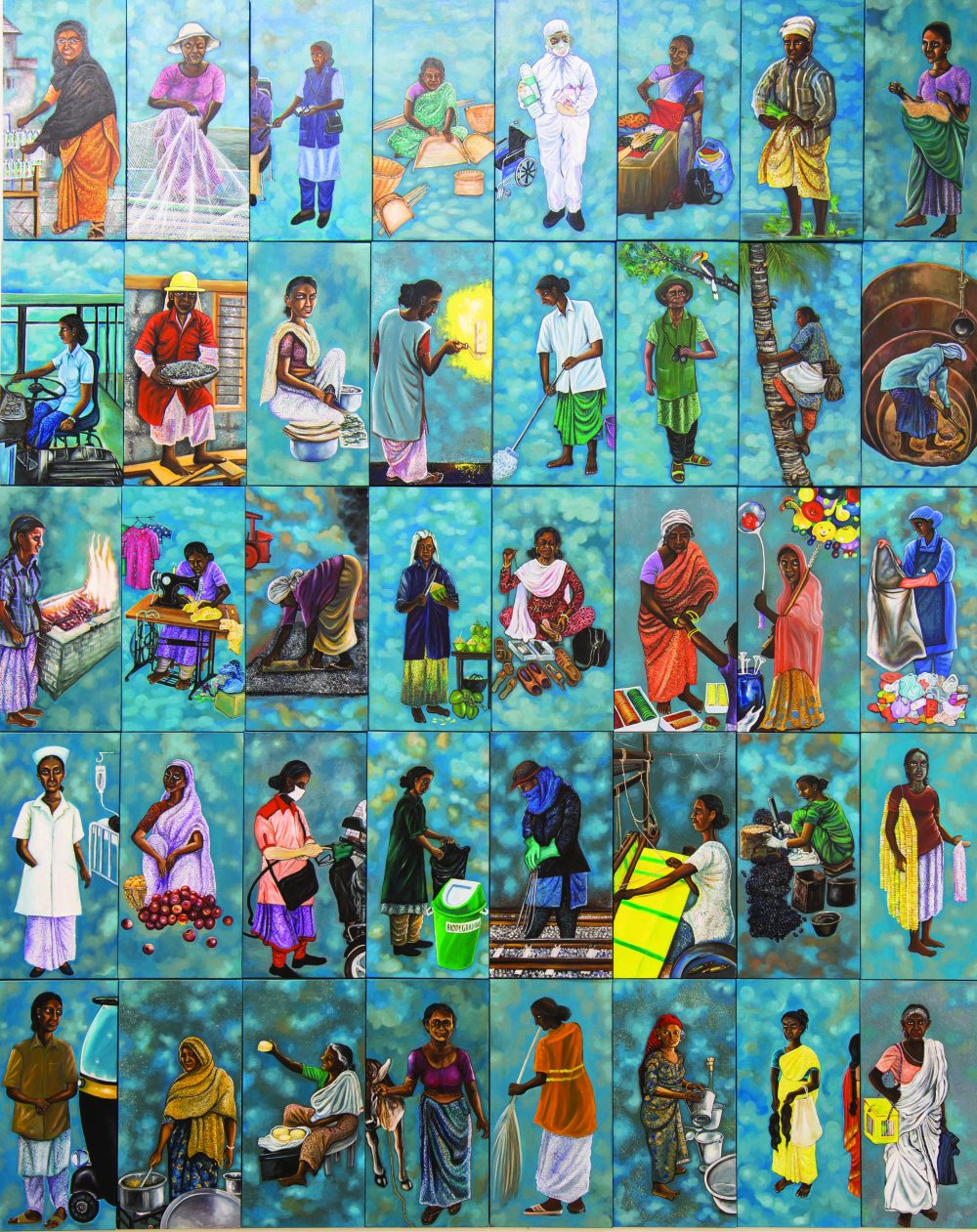
Whether thematic or representative, women have recognised the entire body of works that have never occurred in a significant show before. From home to the street, love to protest, and emotion to revolution, there are many layers of women-led-engagements in the show. For instance; Mona S. Mohan, in her work Game of Survival, makes hand-stitched portraits of people who have survived the odds, including herself as a struggling artist. Lakshmi Madhavan’s Hanging by a Thread is another woven work consisting of Malayalam and English text and the artist’s conversations with her grandmother. Madhavan looks at culture, language, gender, and social norms in a linguistically made cultural sphere.
Apart from the exhibited works and their representations, the site-specificity of the exhibition also needs to be discussed. Primarily, all venues are re-conceptualised for the show as some of them were warehouses or abandoned buildings used for coastal industry. Rather than a spatial transformation, it grafts the art scene into the space and creates a cultural atmosphere conducive to thriving there. It finds a habitat inside and outside the exhibition space by incorporating it as part of the everyday-ness of the township. Alappuzha is a place where people constantly interact with historical relics, creating tourism opportunities and taking them up as a part of their daily routine. Comprehensively, it is vital that the exhibition, which has survived the depression of the pandemic and its isolation, addresses the notion of territory in the context of the global art scenario. Unequivocally, it will strengthen the local art community with a new international direction and recognition.
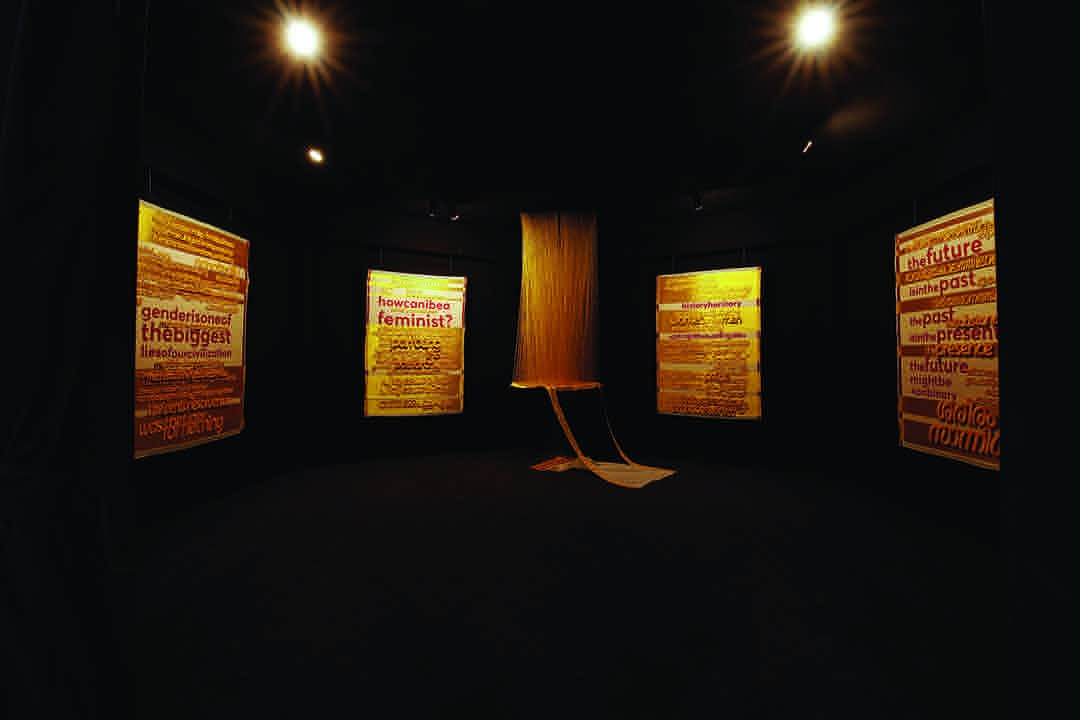
‘Lokame Tharavadu’, curated by Bose Krishnamachari, presented by Kochi Biennale Foundation with the support of the Goverment of Kerala, in Alappuzha and Ernakulam, 18 April 2021–31 December 2021.









